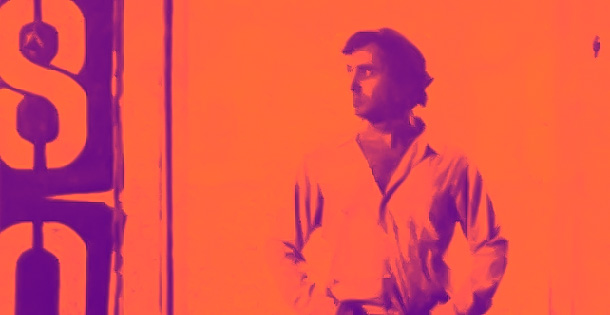Robert Indiana has passed away in his Maine island home at 89 years old.
The Hoosier pop artist achieved global recognition for his “Love” series of the 1960s. The iconic image of the word spelled out with a tilted “O” was originally commissioned for a Christmas card by the Museum of Modern Art in 1965, but the design was replicated in prints, sculptures, tapestries, and even on the cover of this magazine last year.
Indiana was opposed to the abstract expressionist movement, according to a write-up in the Post in 1971. His work often displayed the bold colors of 1960s pop culture with stenciled words and American iconography along with themes of consumption. Prominent stars, stripes, and overlapping figures in his artwork give the impression that he is rearranging the American flag, or perhaps creating road signs in an alternate Midwestern universe.
The artist became reclusive in his later years. His “Love” had been replicated and reimagined endlessly over the years (as “Vote” in 1976 and as “Hope” in 2008), and his reputation among New York art circles diminished as a result. In 2013, however, the Whitney Museum of American Art held a retrospective show of Indiana’s lesser-known works, drawing attention to his boldly subversive place in the 1960s art world.
“Love” remains a “symbol of unity, purity, and communion” in its many incarnations, and Indiana’s legacy can be seen from Wichita to Jerusalem.

Become a Saturday Evening Post member and enjoy unlimited access. Subscribe now




Comments
Thank you for including the links in this feature. I hadn’t previously realized to what extent Robert Indiana had become a victim of his own success with ‘LOVE’, and the knock-offs done without his consent or permission over the past 50 years. It likely got out of control fast.
How much money he should have received in royalties I’m sure would have been in the millions. He was an artist, not an attorney or accountant. How much water had gone under the bridge and how quickly, are both exploitation and a nightmarish tribute to the power and lasting influence of his work.
From what I know about artist Peter Max, this has not been the case with him fortunately. He also never had a single piece of work that was zeroed in on nearly exclusively either. (A future POST cover by him may be an idea to explore).
Thank you for including the 1971 feature on Robert Indiana, from one of the Post’s finest issues ever. I hope he felt honored by that over the years, AND naturally the 2017 Post cover from a modern classic issue.